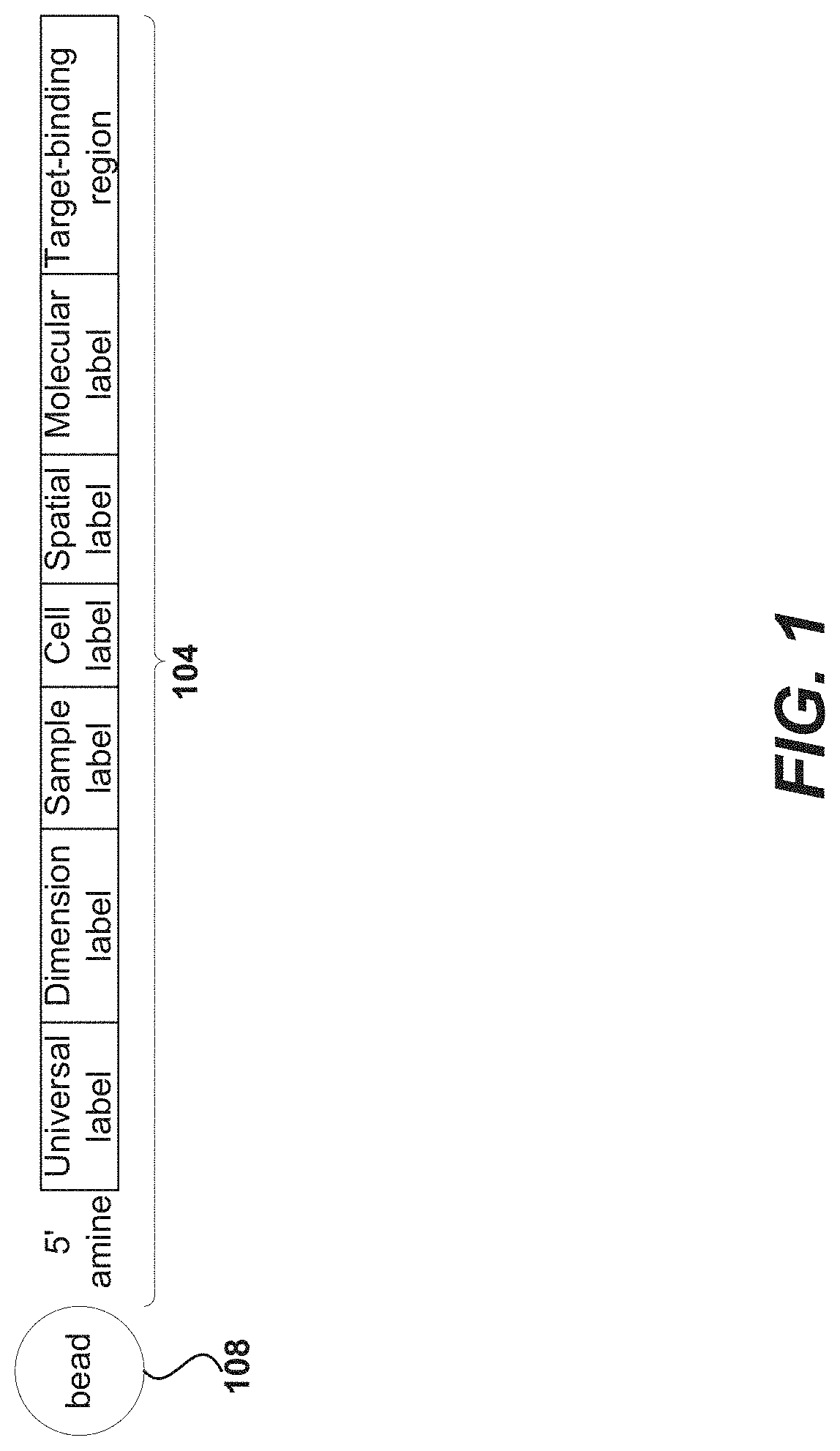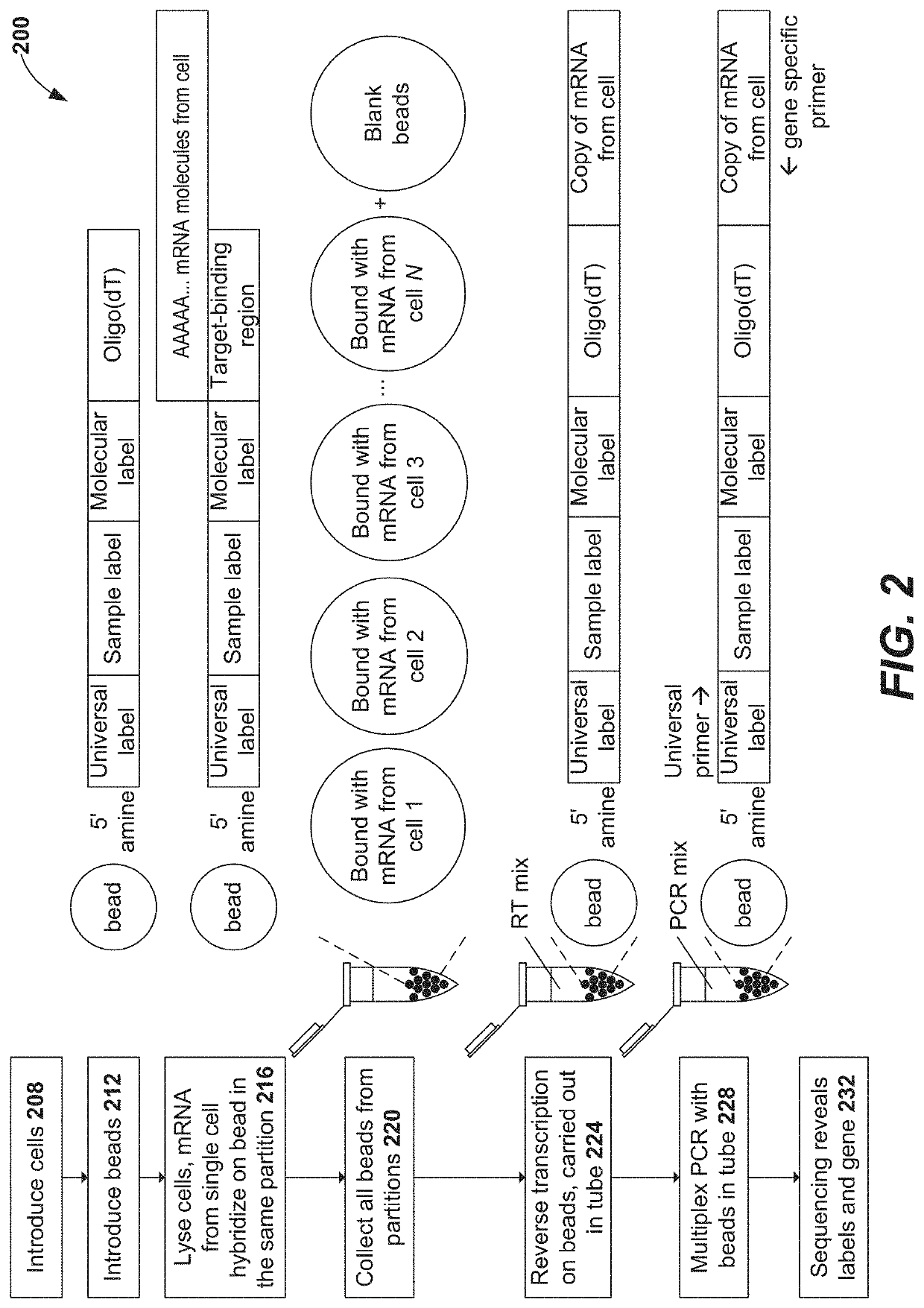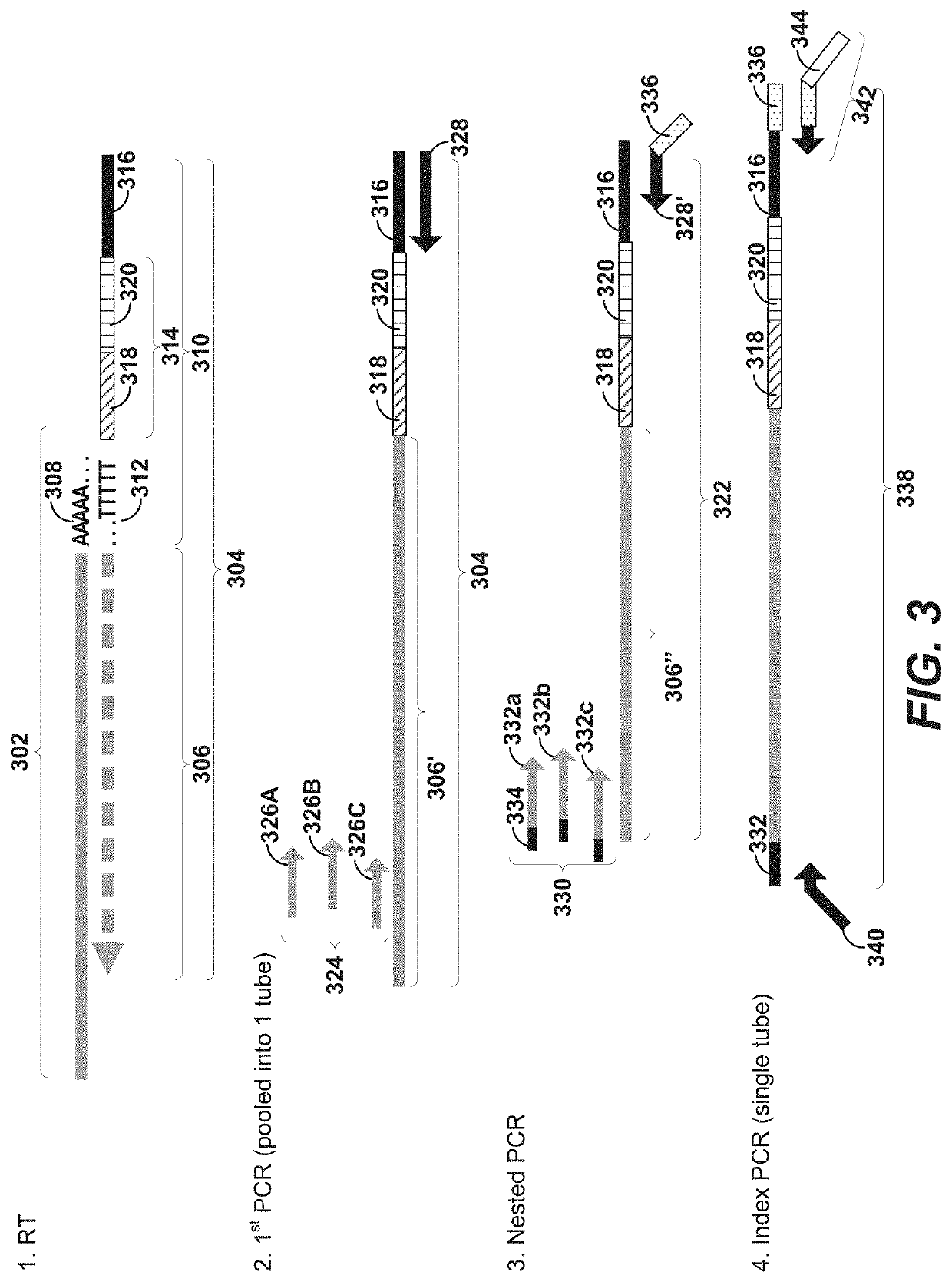Primers for immune repertoire profiling
a primer and immune repertoire technology, applied in the field of molecular biology, can solve the problems of disruptable synthetic particle and disruptable synthetic particl
- Summary
- Abstract
- Description
- Claims
- Application Information
AI Technical Summary
Benefits of technology
Problems solved by technology
Method used
Image
Examples
example 1
V(D)J Protocol
[0366]The non-limiting exemplary V(D)J protocol described below was employed to demonstrate the generation of sequencing libraries for both the 3′ and 5′ ends of mRNA targets of a targeted panel.
BD Rhapsody® Cell Capture and Reverse Transcription
[0367]1. Prepare single cell suspension of sample cells.
[0368]2. Follow standard BD Rhapsody® protocol for single cell capture through retrieval and bead wash and place beads on ice.
[0369]3. Make template switch reaction mix according to Table 1 below.
TABLE 7TEMPLATE SWITCH REACTION MIX200 uLReagentreactionFinal concentrationWater685X SSIV buffer401X(ThermoFisher)dNTP (10 mM,201 mMNEB N0447L)0.1M DTT105 mM100 uM Template52.5 uM 5′ TTT TTT TTT switch oligo (25 T)TTT TTT TTT rG rG rG 3′(SEQ ID NO: 50)25 mM MgCl2243 mM20 mg / ml BSA1100 ng / ulRNase inhibitor 102 U / ul(40 U / u1)Ethylene glycol 1266.8 ug / ul(1113.3 mg / ml)SSIV (200 U / ul, 1010 U / ulThermoFisher)Total200
[0370]4. Place beads on magnet, remove supernatant and resuspend beads in...
PUM
| Property | Measurement | Unit |
|---|---|---|
| Tm | aaaaa | aaaaa |
| diameter | aaaaa | aaaaa |
| pH | aaaaa | aaaaa |
Abstract
Description
Claims
Application Information
 Login to View More
Login to View More - R&D
- Intellectual Property
- Life Sciences
- Materials
- Tech Scout
- Unparalleled Data Quality
- Higher Quality Content
- 60% Fewer Hallucinations
Browse by: Latest US Patents, China's latest patents, Technical Efficacy Thesaurus, Application Domain, Technology Topic, Popular Technical Reports.
© 2025 PatSnap. All rights reserved.Legal|Privacy policy|Modern Slavery Act Transparency Statement|Sitemap|About US| Contact US: help@patsnap.com



